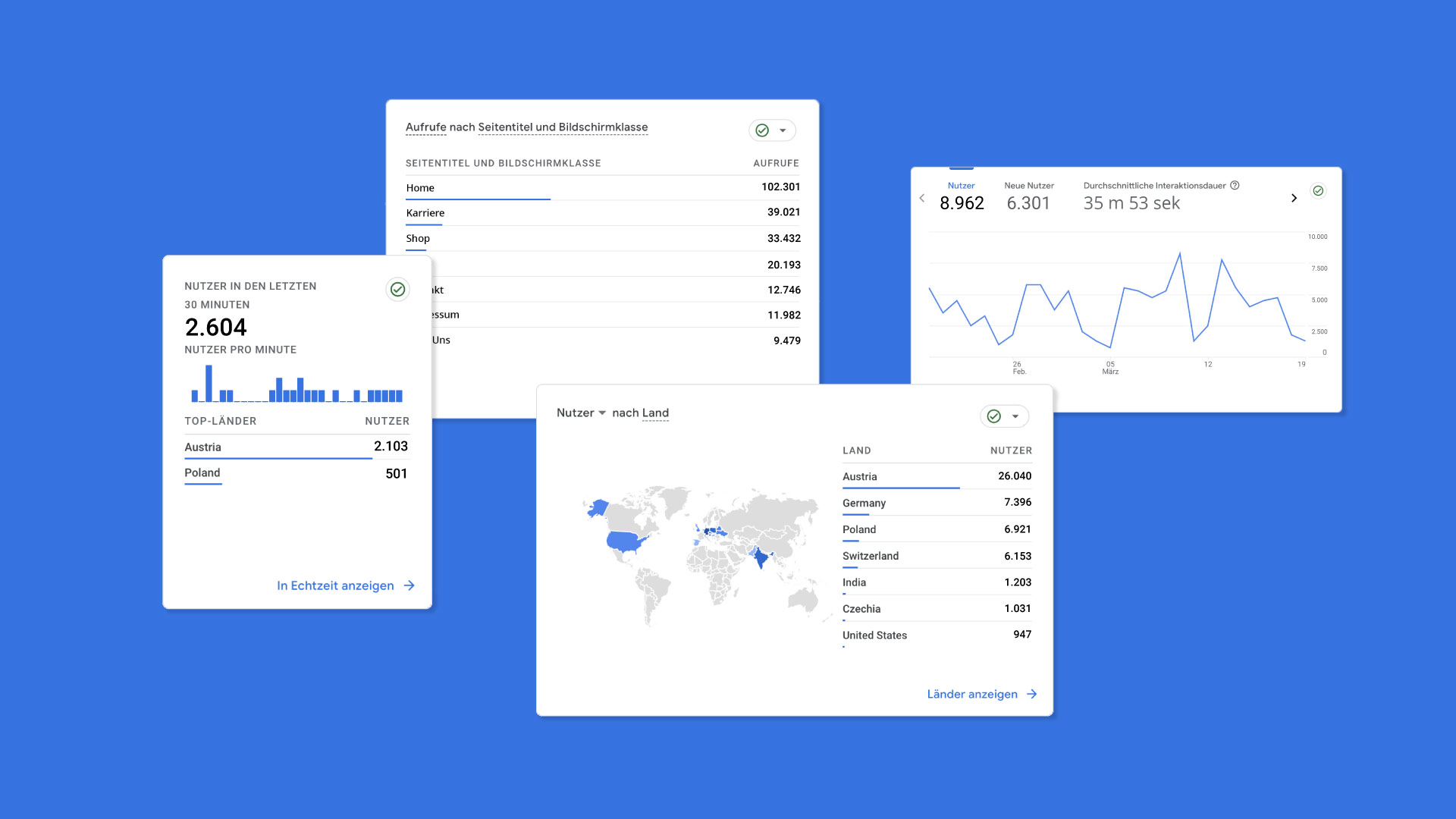Google Analytics 4 - the new standard
Google is shutting down its old Universal Analytics service in the middle of the year, but is already offering the perfect successor in the form of Google Analytics 4. We reveal the crucial differences and, above all, advantages compared to the previous Universal Analytics standard.

Data views vs. data streams
Already when opening GA4 for the first time, the obvious difference in the administrative structure is noticeable. Only one data view can be found in the property, and consequently it is no longer possible to switch between different views within a property. This makes GA4 much leaner than Universal Analytics, which forced the structure Account > Property > Data View. However, this does not mean that the entire website data can only be viewed in consolidated form. The whole thing just looks a bit different in GA4 than we know it from Universal Analytics.
In order to segment data according to certain criteria, so-called data streams are used in GA4. Thus, for example, a website and an app can each run into their own data streams, but still be viewed in a consolidated view. Additionally, for a website with different country or language directories, it is possible to create separate data streams per directory on the same domain. As with Universal Analytics Property, each data stream has its own tracking ID. Which data should go to which data stream can be set in the setup, e.g. via Google Tag Manager. By using the comparison tool and selecting "Stream ID" as the dimension, one can easily switch between the selected data streams. While some streams are excluded, it is also possible to look at multiple streams at the same time.
To avoid data corruption, care should be taken to set up data streams so that there is no duplication between data.

GA4 database
Another essential difference between GA4 and Universal Analytics is the way data is collected. While GA4 data is based on events and parameters, Universal Analytics collects data at the session and pageview level. Here, even an event is treated as a pageview. This means, especially in practice, that GA4 offers more extensive possibilities to expand the data pool with helpful information through any interaction of additional parameters. Thanks to this data collection, less sampling occurs, reports consequently receive more "real" data on average, instead of being based only on a certain percentage of actual data.
Google Analytics Events
Events are by default part of the advanced integration in Universal Analytics, so they cannot be basically tracked once the Analytics code is integrated for the first time. In order to display events in the appropriate reports, code snippets must first be included and retrieved at the right time via JavaScript or the tag manager. In GA4, however, there are events that can be measured "out of the box". These mainly include various clicks within apps, furthermore events like downloads, outgoing clicks or scroll tracking on websites are captured.
Another difference and a big advantage of GA4 are event parameters. In Universal Analytics, you only have parameter categories, actions and labels available, as well as the possibility to transfer values (e.g. currencies). GA4 offers even more scope with up to 25 event parameters that can be used and named individually. Of course, these parameters can be used like the previous Universal Analytics parameters. In addition, they make it possible to expand events in a much smaller, more detailed and more informative way. One thing to keep in mind here is the limit of 500 individual event names. This should be more than enough for most GA4 integrations.
Reports
It's easy to see that the reporting view looks different from what you're used to seeing in Universal Analytics. It offers slightly different reports and turns the GA4 entry into a small hurdle that might scare off the user in the beginning. In GA4, you won't find all the reports as you know them from Universal Analytics. However, the user can expect a pleasant innovation: The Analysis Hub offers an enormously improved possibility to create a custom reporting. Thanks to the drag-and-drop function, reports can be created relatively easily according to one's own taste and data can be combined with each other. This is not particularly user-friendly with Universal Analytics and is difficult to implement.
Debugging
The following new feature will especially benefit tracking lovers: the debugging view. This is a separate report that makes live testing or tracking integration possible. After activating the GA Debugger plugin or the Tag Manager Preview mode, your own activities are specifically visible in this view. These can be tracked and there is also the possibility to verify whether events work as desired and whether they also enter Analytics correctly. Compared to the Universal Analytics Live report, this is a significant improvement. Especially for websites with a lot of traffic, it was difficult with Universal Analytics to be able to identify one's own actions.


You would like to implement GA4?
No problem! We are happy to help you with the conversion from Universal Analytics to Google Analytics 4 and accompany you from the website implementation to the setup of the Analytics Dashboard. In addition, we also offer trainings around Google Analytics 4. We support you with your complete digital presence and the optimal online representation of your company. For this we bring our whole potential into play.









